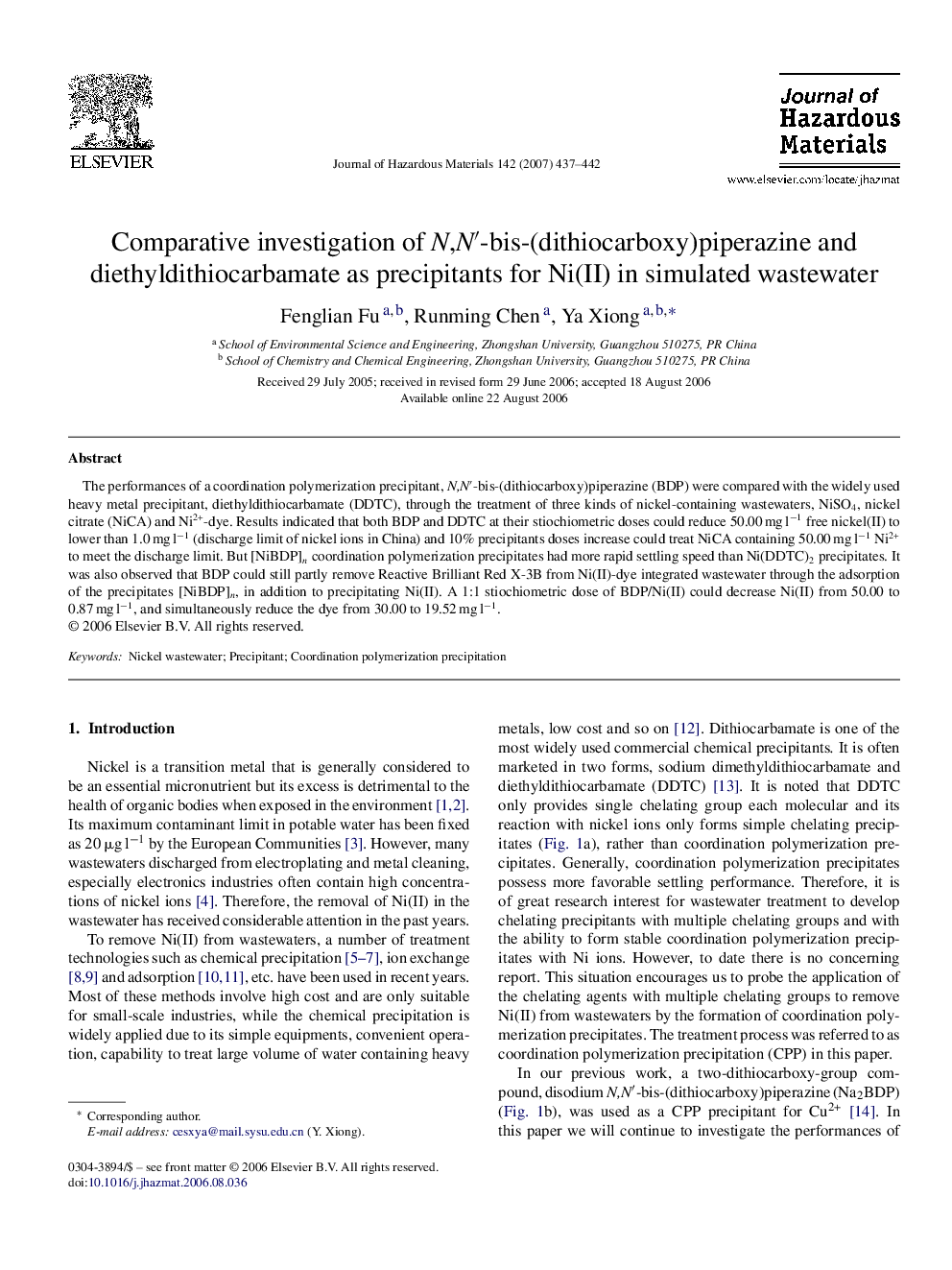| Article ID | Journal | Published Year | Pages | File Type |
|---|---|---|---|---|
| 584572 | Journal of Hazardous Materials | 2007 | 6 Pages |
Abstract
The performances of a coordination polymerization precipitant, N,Nâ²-bis-(dithiocarboxy)piperazine (BDP) were compared with the widely used heavy metal precipitant, diethyldithiocarbamate (DDTC), through the treatment of three kinds of nickel-containing wastewaters, NiSO4, nickel citrate (NiCA) and Ni2+-dye. Results indicated that both BDP and DDTC at their stiochiometric doses could reduce 50.00 mg lâ1 free nickel(II) to lower than 1.0 mg lâ1 (discharge limit of nickel ions in China) and 10% precipitants doses increase could treat NiCA containing 50.00 mg lâ1 Ni2+ to meet the discharge limit. But [NiBDP]n coordination polymerization precipitates had more rapid settling speed than Ni(DDTC)2 precipitates. It was also observed that BDP could still partly remove Reactive Brilliant Red X-3B from Ni(II)-dye integrated wastewater through the adsorption of the precipitates [NiBDP]n, in addition to precipitating Ni(II). A 1:1 stiochiometric dose of BDP/Ni(II) could decrease Ni(II) from 50.00 to 0.87 mg lâ1, and simultaneously reduce the dye from 30.00 to 19.52 mg lâ1.
Keywords
Related Topics
Physical Sciences and Engineering
Chemical Engineering
Chemical Health and Safety
Authors
Fenglian Fu, Runming Chen, Ya Xiong,
